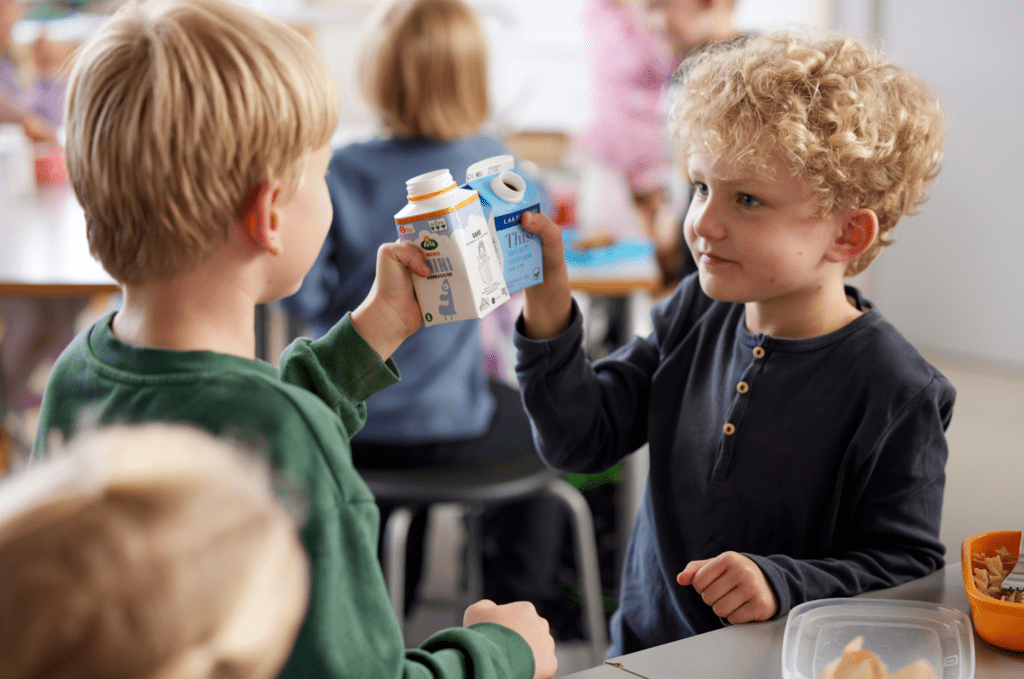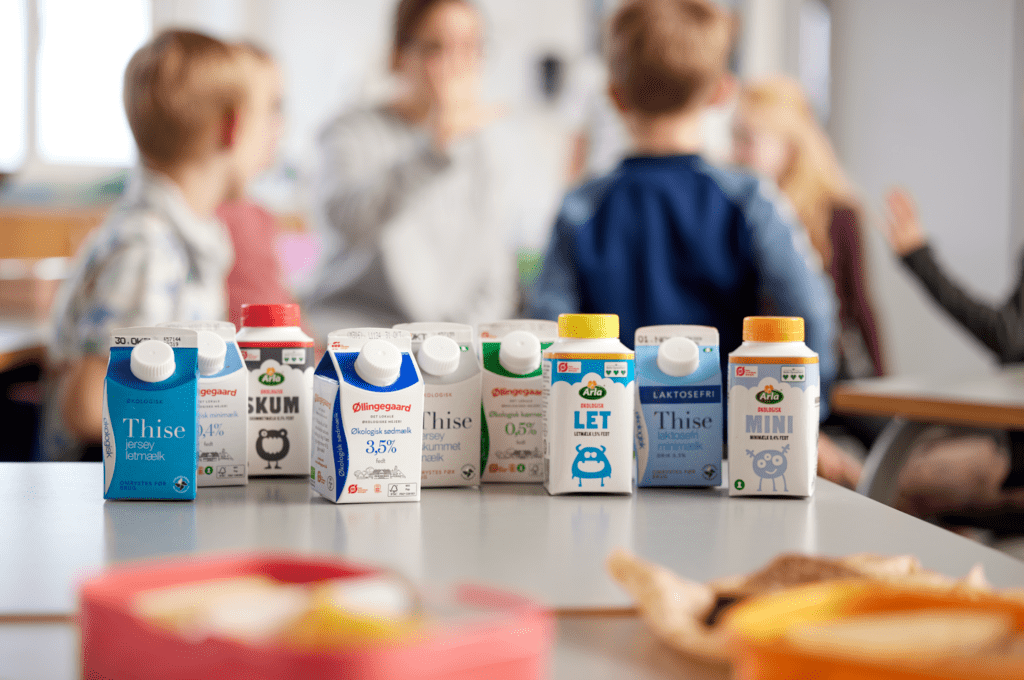Share this page
Danish School Milk Scheme
Creating healthy eating and drinking habits for children through a voluntary school milk programme


Location
Denmark
Number of children
Approx. 69,000
Age range
Grades 0-10
Timing
1991-present
Program overview
The Danish School Milk Scheme (Mejeriernes Skolemælksordning) covers primary school aged children in Denmark – from grade 0 up until 10th grade. The primary target group ranges from 0 to 2nd grade.
The programme is currently in approx. 1100 schools, out of approx. 1600 primary schools in Denmark.
The purpose of the Danish School Milk Scheme is to encourage a healthy lifestyle in school, and to make an effort to give children healthy eating and drinking habits.
At the same time, the aim is to have an administratively simple school milk scheme that makes it easy for all those involved, i.e. schools, wholesalers, dairies and parents, to ensure the children have access to cold, fresh school milk every day.
Type of products
Milk, in different fat variants from skimmed to whole milk
Stakeholder engaged
Parents, school children & local dairies
Additional details
As of July 2023, the school milk program offers only milk, no other dairy products. Subscribers have the option to choose between organic or conventional milk, available in various fat variants ranging from skimmed to whole milk. Additionally, the program allows subscribers to choose from three different dairies: Arla, Thise, and Øllingegaard/Naturmælk, based on their preferences. The milk is served in 250 ml servings during lunchtime, typically around 11.30 o’clock.
In addition, the program provides educational activities through a dedicated website, offering free materials and campaigns. These campaigns often feature on the school milk cartons through stickers on the lid.
Furthermore, the program offers a publication called ‘Forældrehåndbogen,’ a complimentary handbook that schools can distribute to parents of preschool children. This handbook covers various topics relevant to children starting school, including healthy lunchbox ideas, friendships, being self-reliant, etc.
Parents can order school milk for their children at skolemælk.dk. The program receives the payment and arranges the milk orders from wholesalers. The wholesalers, in turn, place the milk orders with the selected dairies and ensure the delivery to the respective schools. Within the schools, the programme has contact with the staff responsible for managing the school milk distribution. At some schools the children help with the packing in class. All school milk is paid for by the parents.


Organization
Danish Dairy Board
Monitoring & impact
The goal has always been to keep a steady growth in terms of subscribers for the school milk programme in Denmark, but since 2019 it has been more difficult retaining subscribers and the programme has seen numbers decline from just around 100.000 subscribers in 2020 to roughly 69.000 at the moment.
There have been various challenges which have made it more difficult for the milk in the school room. There was the Covid-19 pandemic in 2020/21, which meant that many opted out of the programme and never came back again. In addition the current inflation in the country as well as the health authorities lowering the general recommendation of milk consumption from ½ to ¼ L of milk per day has also affected milk consumption in general, but also for the School Milk Scheme.
The programme is currently working on a new strategy together with the dairies involved, where they are looking into the possibility of broadening the assortment with other dairy products.


Dietary guidelines
The programme looks to the National Dietary guidelines in Denmark in relation to the School Milk Programme, which in terms of dairy intake recommend the following:
• Children aged 2-5 years: 250 ml of milk or milk product and 10 g of cheese per day (1/2 slice) or 300 ml of milk or milk product per day if the child does not eat cheese.
• Children aged 6-9 years: 250 ml of milk or milk product and 15 g of cheese per day (3/4 slice) or 325 ml of milk or milk product per day if the child does not eat cheese.
• Children from 10 years and adults: 250 ml of milk or milk product and 20 g of cheese per day (1 slice) or 350 ml of milk and milk product per day if you do not eat cheese.
Thoughts for reflection: The programme is considering downsizing from 250 ml, because as they see above the National Dietary Guidelines only suggest this amount for a full day, and as they know a lot of children get milk or other dairy products at home, this makes the current size of the product maybe less in line with reality (and the guidelines) as opposed to previously, where the guidelines recommended 500 ml.






